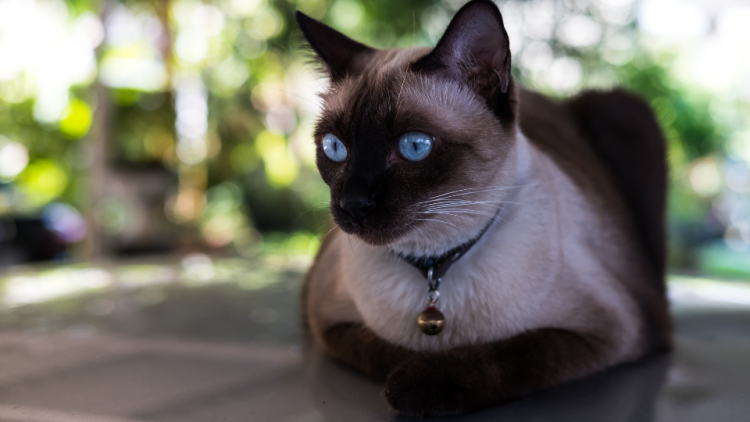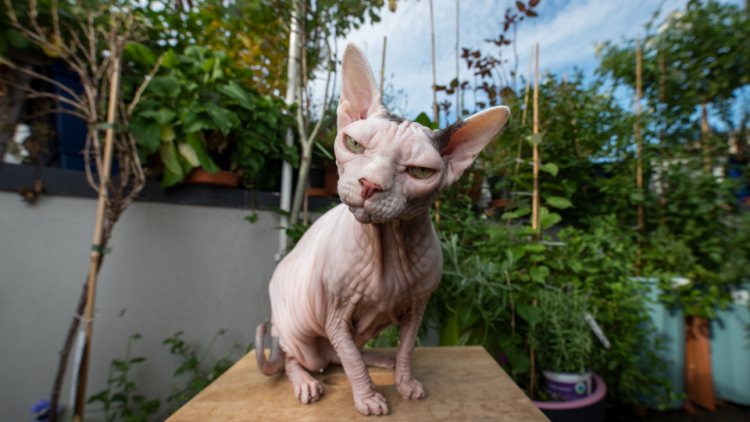While the way you take care of your feline friend does play an important role in determining their overall health and life expectancy, some breeds are more susceptible to health issues common in cats.
Being aware of these hereditary conditions can help pet parents prepare for the future by budgeting for veterinary expenses they could encounter throughout their pet’s lifetime. If you sign up for cat insurance while your pet is still healthy, you can get reimbursed for expensive veterinary treatments that may likely occur down the line. Pet insurance is worth it for most cats, but it could prove especially valuable for those known to develop costly medical conditions later in life.
Here are seven cat breeds that need pet insurance the most:
Pro Tip: The cost of pet insurance for cats starts as low as $9 per month, but breed is one factor that impacts rates, in addition to age, location, medical history, and desired coverage level.

Siamese
These intelligent, playful, blue-eyed cats commonly suffer from various types of cancer, such as lung cancer, mediastinal lymphoma, and mammary tumors. The good news is that there are several treatments and tests available that may significantly extend the life of your pet. Unfortunately, without Siamese cat insurance, cancer can be extremely expensive to treat in pets:1
- Biopsies - $1,500
- Radiation - $500 to $1,000 per session
- Chemotherapy - $1,000 to $15,000 for a full course
- Robotic radiosurgery - ~$10,000
Hopefully, your pet is never diagnosed with a cancerous disease, but pet insurance for Siamese cats could prove tremendously valuable if they were to develop any other genetic condition common to the breed, such as:
- Systemic amyloidosis
- Hip dysplasia
- Gastrointestinal issues
- Respiratory problems like feline asthma
- Progressive retinal atrophy
- Mediastinal lymphoma

Ragdoll
Named after their laid-back nature that allows them to go limp when picked up, just like a ragdoll, these gentle felines win the hearts of many cat lovers with their sharp, blue eyes and silky, gray coat.
Sadly, Ragdolls are prone to kidney disease — the fourth most-common illness in felines and the second most-expensive condition to treat, costing an average of $649 per year.2
Other common ailments that could be covered by pet insurance for Ragdolls include hypertrophic cardiomyopathy, a cardiac disease that causes the walls of the heart to become progressively thicker and thicker, as well as bladder stone and other urinary tract issues.
Note that there are screening tests for heart disease and heart murmur in cats, so you can ask the adoption center or breeder whether a kitten has been tested if you’re worried about cardiac issues in a Ragdoll litter. You can also ask the breeder for the medical history of the parents and grandparents to check for genetic health issues that are likely to be passed on.

Persian
These calm cats are known for their long coat and short muzzle. Though the flat Persian face may be cute, their brachycephalic anatomy often leads to breathing difficulties, upper respiratory infections, and dental disease due to a shortened skull.
In addition, Persians are prone to eye issues, such as cataracts, progressive retinal atrophy, and malformed tear ducts that lead to an overproduction of tears, as well as skin conditions like seborrhoea. Skin issues in cats can add up quickly; for example, the cost of a vet visit for regular dermatitis can range anywhere from $100 to $500 with full prescriptive treatments.1
Other common health problems in Persian cats include:
- Polycystic kidney disease
- Hypertrophic cardiomyopathy
- Dermatophytosis (ringworm)
- Neurological disorders
Persians also tend to have a higher incidence rate of ringworm in cats because they are often found in catteries. Fortunately, Persian pet insurance can lower the cost of potentially necessary vet care for covered medical conditions, so long as they do not exist at the time of enrollment.

Bengal
Bengal cats are recognizable by their ‘rosette’ shaped pattern that’s also seen on wild cats like jaguars and leopards. Their high energy commonly results in restlessness and potential foriegn bodies from playing with items like string, which are considered medical emergencies and require expensive surgery to remove. Many providers offer Bengal pet insurance with accident-only coverage to help with vet bills due to unexpected injuries.
These highly active felines might face a greater likelihood of eye issues, including progressive retinal atrophy and cataracts. These eye conditions can be treated with daily eye drops or other methods, but in some cases, surgery might be necessary. If so, the cost of eye surgery can range from $50 to $3,000 per eye.1
Bengals are prone to health issues such as:
- Kidney disease
- Hypertrophic cardiomyopathy
- Hip dysplasia
- Cystitis
- Pyruvate kinase deficiency

Sphynx
The Sphynx is one of the most well-known hairless cat breeds. The lack of fur makes these cats prone to skin irritations, skin cancer, and sunburn. Other dermatology issues stem from their sebaceous glands and over-secreting exudates, causing them to be oily. They therefore need bathing or specialist appointments for maintenance, which you may be able to get reimbursed for with a Sphynx pet insurance plan.
Sphynx kittens are at an increased risk for developing upper respiratory infections than other cat breeds. Adult Sphynx cats are at greater risk of health conditions including:
- Hypertrophic cardiomyopathy
- Dilated cardiomyopathy
- Mitral valve dysplasia
- Heart disease
- Periodontal (gum) disease

Exotic Shorthair
Exotic Shorthairs were bred as a descendent of Persian cats, and therefore have a similar flat face and shortened nose. As a brachycephalic breed, the abnormal shape of their skull often leads to:
- Difficulty breathing
- Difficulty eating and drinking
- Increased risk of eye diseases, such as progressive retinal atrophy and excessively watery eyes that trigger skin rashes and sores
While American Shorthair cat insurance is also important, as many as 50% of Exotic Shorthair cats are affected by polycystic kidney disease.3 Other health concerns include hypertrophic cardiomyopathy and urinary disorders.

Scottish Fold
Known for their owl-like appearance with a rounded face, these cats have a natural dominant-gene mutation that affects the cartilage throughout their body. The defects are responsible for the down and outward “fold” of the ear that frequently leads to ear issues and arthritis. These conditions end up being rather expensive to treat due to the cost of imaging, pain management, and ongoing vet care.
Pro Tip: All indoor and outdoor cats are susceptible to health risks that can cost a few hundred or a few thousand dollars to treat. Breeds with fewer hereditary conditions can still get sick or injured no matter how careful we are, but pet insurance means you'll always be prepared.
Pawlicy Advisor is the best place to compare pet insurance plans. You can easily view coverage details, policy terms, key features, and more from top providers side-by-side. Get customized cat insurance recommendations in a matter of minutes based on your pet’s specific breed, age, and location to find the greatest valued plan at the lowest possible price.
Key Takeaways
- All cats can have health issues, but several breeds express hereditary conditions more often than others.
- With the right pet health insurance plan, pet parents could get reimbursed for 70-100% of vet bills.
- Make sure to carefully choose a pet insurance company that best fits your pet's needs and enroll your cat while they’re still young and before they show any signs of an illness.
References
- Healthy Paws, “2019 Cost of Pet Health Care” Accessed Dec. 10, 2021.
- Nationwide, “Common medical conditions for dogs and cats can lead to costly veterinary visits” Accessed Dec. 10, 2021.
- NCBI “Epidemiological evaluation of cats associated with feline polycystic kidney disease caused by the feline PKD1 genetic mutation in Japan” Accessed Dec. 10, 2021.
